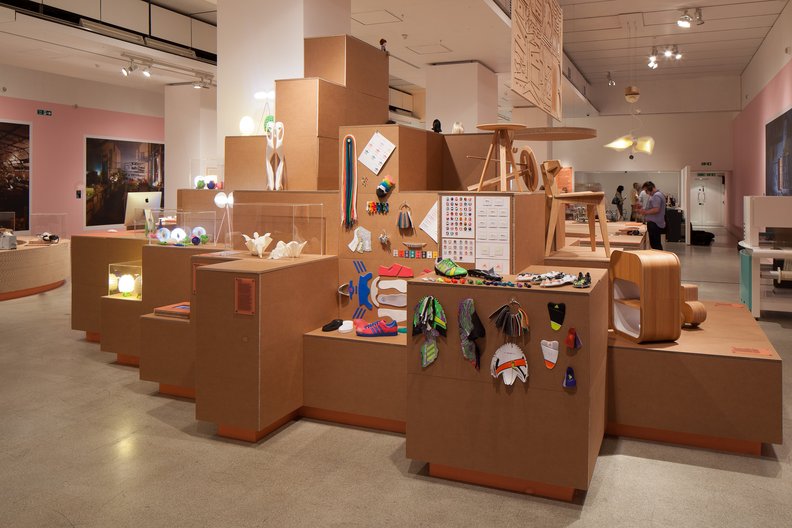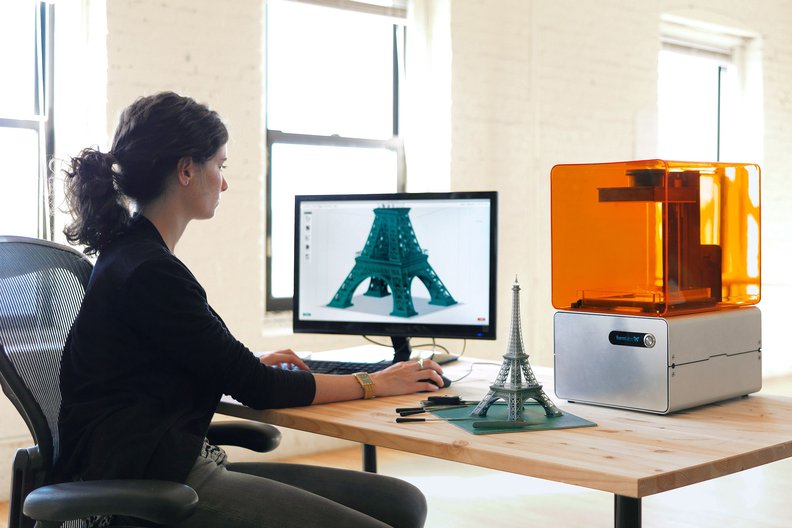19 September 2013
by Ryan Dunn
The Future is Here: A New Industrial Revolution, the latest exhibition at London’s Design Museum, explores how the convergence digital manufacturing, social networks and smart material technologies are radically transforming the way we design, make and use objects in the 21st century. A third industrial revolution is here – one according to the Museum with the potential to affect the way we live as profoundly as the previous industrial revolutions1. But should anyone care?
You say you want a revolution
The first industrial revolution (IR1) was kick started by the mechanisation of the British textile industry in the late 18th century. Machines permitted faster production of goods with a smaller input of human labour, transforming an economy based on handicraft to one dominated by industrial manufacture. The second industrial revolution (IR2) arrived one hundred years later with the rise of mass production. Innovations including mains electricity and the internal combustion engine led to huge improvements in living standards, and gains in productivity lowered the cost of many consumer objects to within reach of the emergent middle class.
The third revolution (IR3) is digital. In stark contrast to Blake's 'dark satanic mills' the factory of the future fits onto a desktop. The Future Is Here showcases key fabrication techniques of IR3 including 3D printing, digital knitting and CNC milling, as well as inviting visitors to have a go at making objects in a live 'factory'. A central theme of the exhibition is how these technologies are leading to the democratisation of design via mass customisation, crowdsourcing and open source networks. Objects on display such as dolls, Adidas trainers and community micro-manufacturing workshop Assemble & Join blur the boundaries between designer, manufacturer and consumer – illustrating the potential for mass customisation offered by digital manufacture.
We all want to change the world
Customisation is a perennial common subject within design discourse. Each generation has attempted to revive this zombie idea, but despite designers’ enthusiasm their interest in customisation is usually met with indifference by the consumer. The century since Thorstein Veblen coined the term 'conspicuous consumption'2 has taught us that individuals desire brands not unique objects, and there is little evidence that consumers have either the inclination or skills to design objects themselves.
Anthropologist Daniel Miller shows in The Comfort of Things that rather than creating objects, consumers transcend the banality of mass production by constructing meaning around a haphazard array of bought and acquired objects. Miller's portraits of people living on a suburban London street describe the residents' relationship to material culture as akin to curators or decorators3. As Miller points out, the residents’ job is a lot more difficult than that of the professional designer:
they are using material culture as a way of ordering a multitude of relationships to all the people they know, their family, friends, possible visitors to their house, and to all the multiple aspects of themselves that jostle for a place in these museums and galleries that are people's living spaces in every sense of the word living.4
Given the richness of the process by which users already go about 'designing themselves'5 could customisation be irrelevant? Indeed, a survey commissioned by the Museum reveals that a mere 20% of consumers would like a greater level of participation in the design of their objects.
You say you got a real solution
What should we make of the Museum's prediction that digital manufacture could lead to increased growth and productivity? In a 2012 paper economist Robert Gordon speculates that the IT revolution has failed to live up to its lofty promises and suggests that the progress made in the 250 years since IR1 could well be a unique episode in human history. To illustrate his point Gordon presents a thought experiment on the relative importance of innovations from IR2 compared to the digital systems of IR3:
You are required to make a choice between option A and option B. With option A you are allowed to keep 2002 electronic technology, including your Windows 98 laptop accessing Amazon, and you can keep running water and indoor toilets; but you can’t use anything invented since 2002.
Option B is that you get everything invented in the past decade right up to Facebook, Twitter, and the iPad, but you have to give up running water and indoor toilets. You have to haul the water into your dwelling and carry out the waste. Even at 3am on a rainy night, your only toilet option is a wet and perhaps muddy walk to the outhouse. Which option do you choose?5
To account for the diminishing returns of digitalisation Gordon explains that 'many of the inventions that replaced tedious and repetitive clerical labor with computers happened a long time ago, in the 1970s and 1980s. Invention since 2000 has centered on entertainment and communication devices that are smaller, smarter, and more capable, but do not fundamentally change labor productivity or the standard of living in the way that electric light, motor cars, or indoor plumbing changed it.'
If Gordon is correct, is then digital manufacture all dressed up with nowhere to go? Speaking to The Guardian, exhibition curator Alex Newson predicts 'a big future in replacement parts' and that 'within five years, you'll be able to go round the corner and get a pump printed for your washing machine'6.
A more ambitious goal for 'replacement parts' though is surely in prosthetics and medical design – an area that frustratingly the Museum almost completely ignores in their focus on consumer goods – but in which digital manufacture is already making profound improvements to people's quality of life.
We'd all love to see the plan
There may yet be more to come from IR3; however, I expect that the impact of digital manufacture will largely remain in medical design, aerospace and nanotechnology. Nevertheless Newson contends that ‘consumers want, and are demanding a bigger input into the creative process behind their products'6. If this is the case then I believe it points us towards the emerging field of user centred design. User centred design goes beyond mass customisation, crowdsourcing and open source by looking to the aesthetics, interactions and intimate rituals of people for its inspiration.7 This approach combines designers' observational skills and intuition with the ethnographic research and insights of anthropology to create products that better respond to user’s lives.
In its emphasis on manufacture, mass customisation too often offers only a narrow set of pre-determined outcomes, leaving personalisation to become little more than a superficial extra. Crowdsourced projects such as the 2010 Indian Rupee public design contest give a wide community of stakeholders the opportunity to connect with a design. But a parallel future could have more in common with the Doritos Mariachi Band advertising campaign. Doritos crowdsourced ideas from amateur filmmakers who as a condition for submitting a competition entry gave up all rights to their creation in perpetuity, conveniently allowing the crisps brand to avoid paying expensive designer's fees8. And we need only consider the 3D printed gun for an example of how open source design can quickly turn sour.
As the rate of digitalisation in everyday life continues to gather pace, the challenge for designers, in the words of Marshall Berman, is to 'create a mode of modernity, in which man will not exist for the sake of development, but development for the sake of man'9. This is the critical dialogue that design must have with technology. In the meantime, the future is here. Enjoy it while it lasts.
References
Category
Commentary
Location
UK


